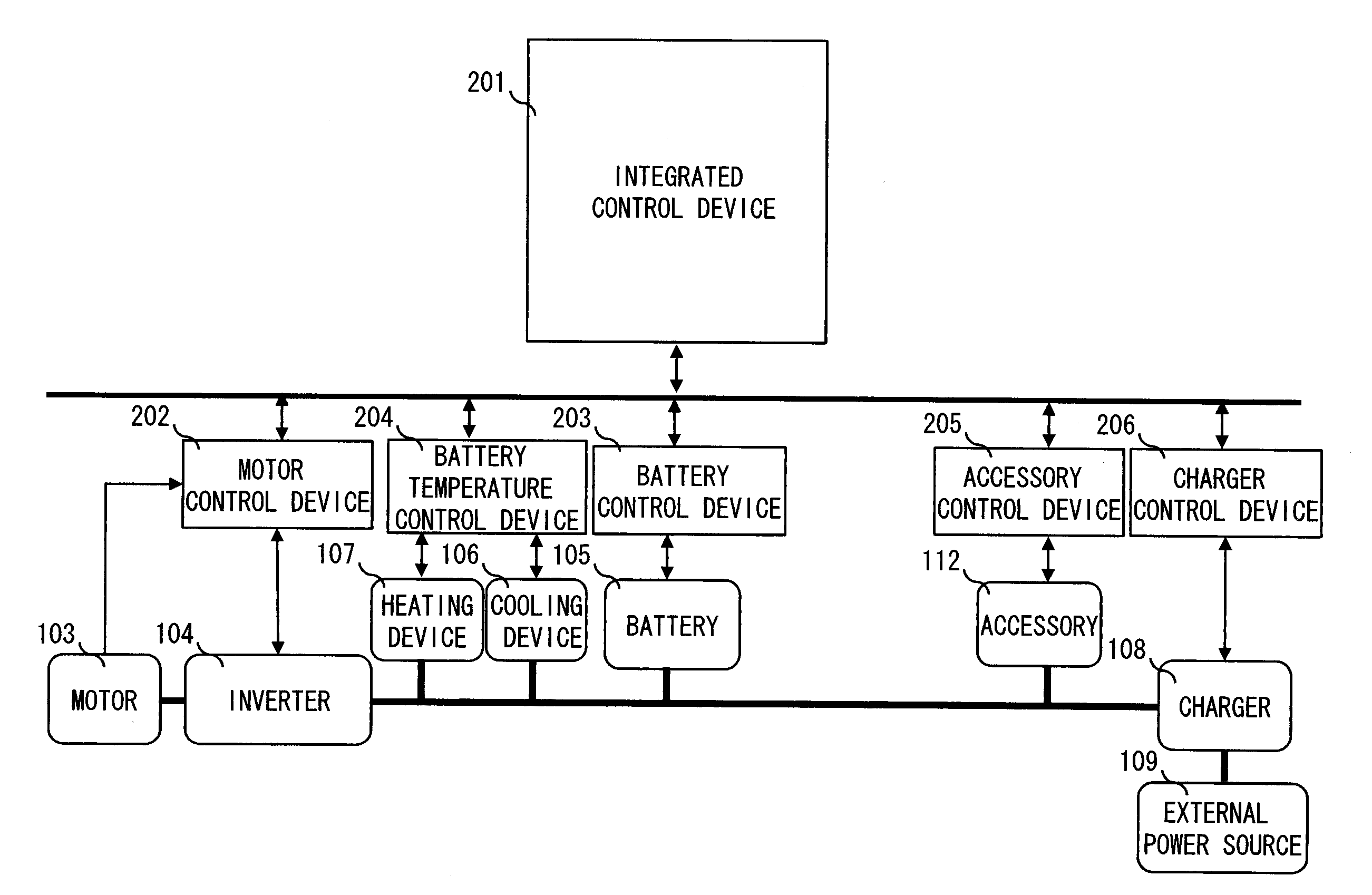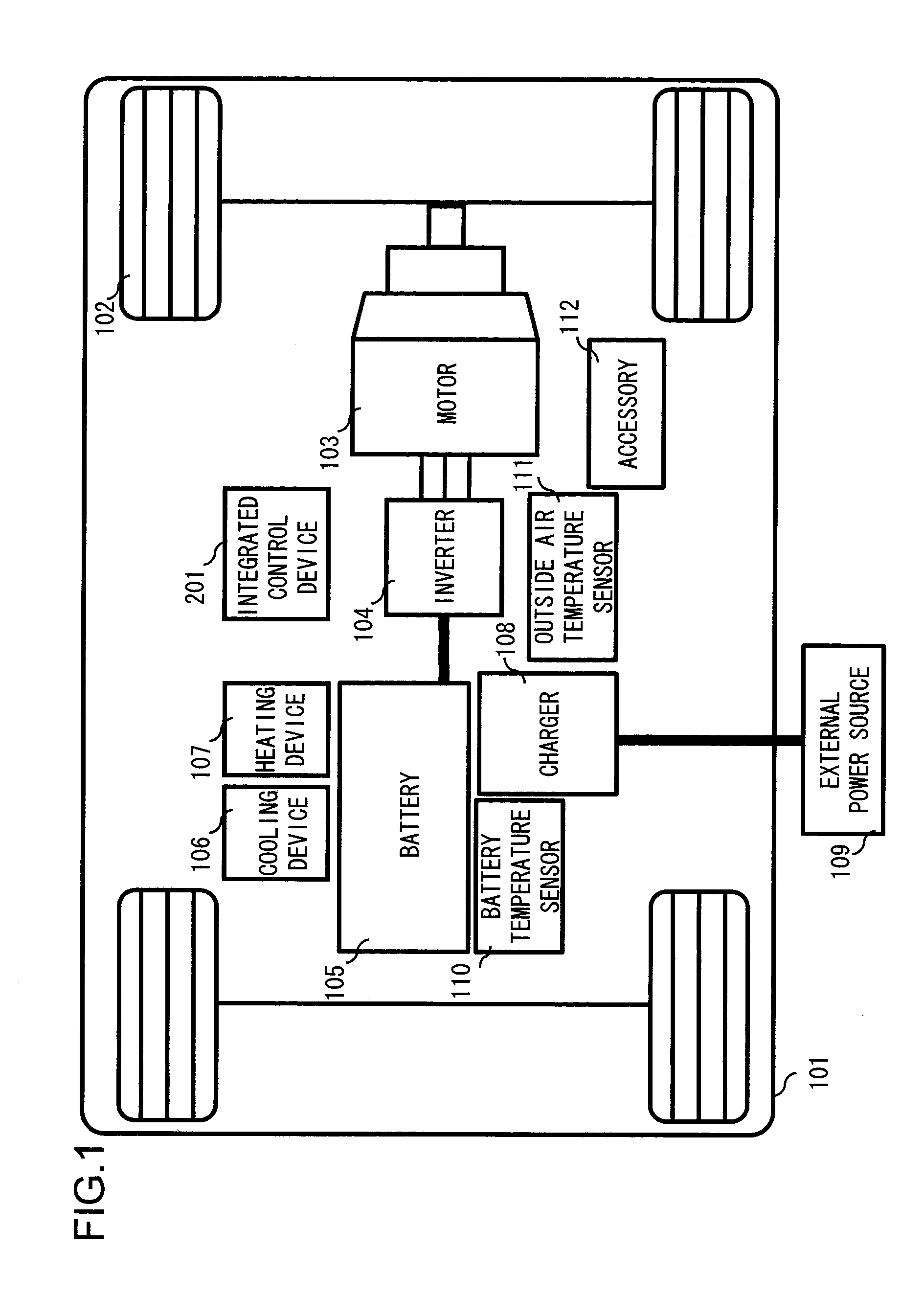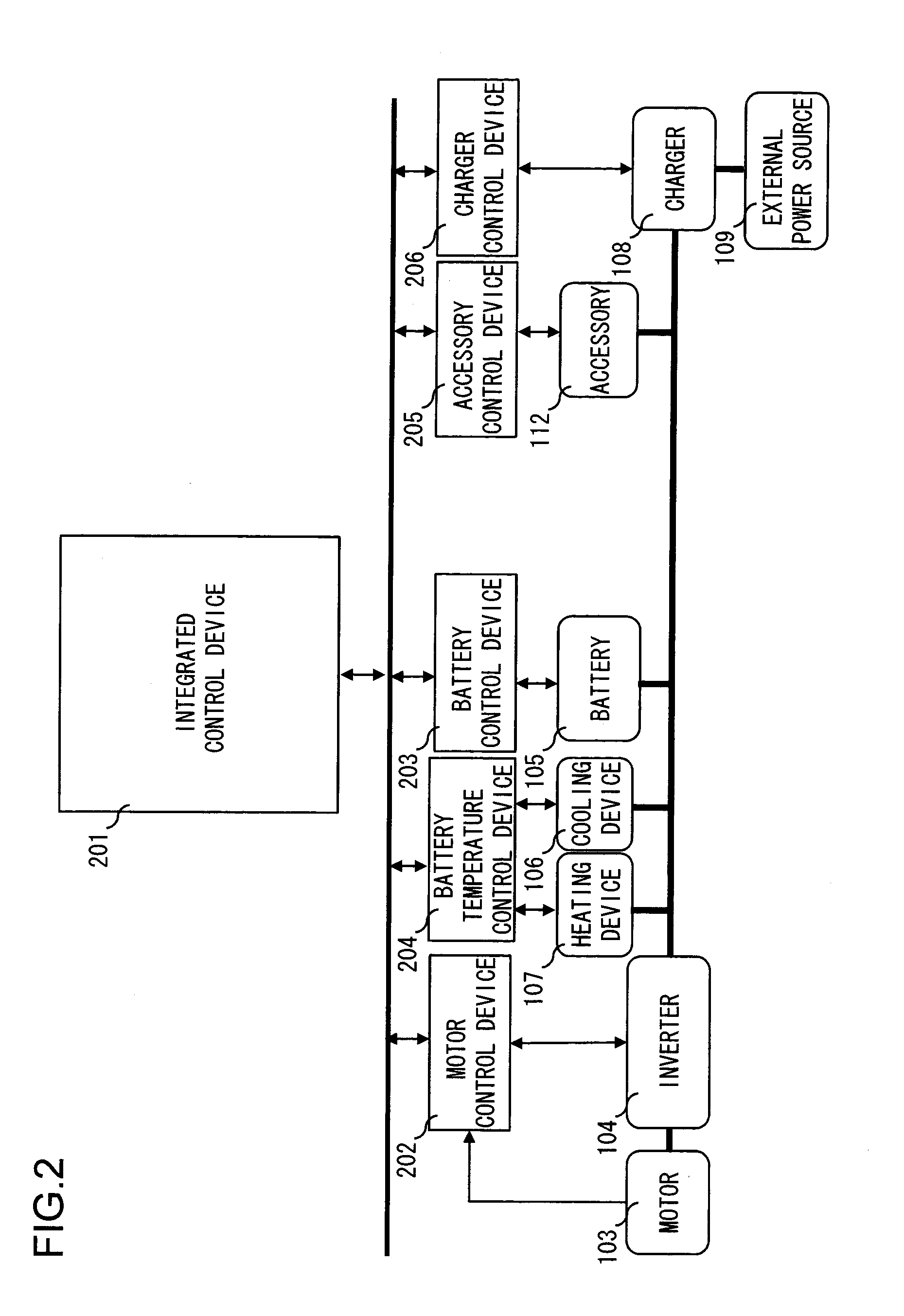Charge Control System
a control system and charge technology, applied in the direction of battery/fuel cell control arrangement, secondary cell servicing/maintenance, battery/motor energy reduction, etc., can solve the problems of shortening not necessarily low temperature, and reducing the energy that can be used for driving the electric motor. , to achieve the effect of increasing the cruising distance of the electric vehicl
- Summary
- Abstract
- Description
- Claims
- Application Information
AI Technical Summary
Benefits of technology
Problems solved by technology
Method used
Image
Examples
first embodiment
[0054]FIG. 2 presents a diagram showing the construction of the charge control system according to the first embodiment of the present invention. The charge control system includes an integrated control device 201; a motor control device 202 for controlling the inverter 104 and the motor 103; a battery control device 203 for controlling the battery 105; a battery temperature control device 204 for controlling the cooling device 106 and the heating device 107; an accessory control device 205 for controlling an accessory 112; and a charger control device 206 for controlling the charger 108. These control devices are mutually connected through a communication network, for example, CAN (Controller Area Network) provided in the electric vehicle 101.
[0055]In the charge control system shown in FIG. 2, the inverter 104, the cooling device 106, the heating device 107, the accessory 112, and the charger 108, respectively, are connected to the battery 105. As a result, the power from the batte...
second embodiment
[0096]Next, the charge control system according to a second embodiment of the present invention is explained. The present embodiment is different from the first embodiment in that in the second charging mode in step S402 illustrated in FIG. 4, control is performed such that the battery temperature T is not set at the lower limit value Tmin of the charge-discharge allowing battery temperature but at a target battery temperature T_target that is set taking into consideration an outside air temperature T_out. The target battery temperature T_target is obtained by adding an offset temperature delta_T determined depending on the outside air temperature T_out to T_min.
[0097]FIG. 9 presents a flowchart illustrating processing in a second charging mode performed in the charge control system according to the second embodiment instead of the processing illustrated by the flowchart in FIG. 7. In the flowchart in FIG. 9, like FIG. 7, the processing steps having the same contents as those shown ...
third embodiment
[0119]Next, the charge control system according to a third embodiment of the present invention is explained below. The present embodiment is different from the second embodiment as explained above in that in step S902 in FIG. 9, the offset temperature delta_T is determined based on a forecasted load of the battery 105 and the outside air temperature T_target and the target battery temperature T_target is calculated.
[0120]FIG. 13 presents a construction diagram that shows the charge control system according to the third embodiment of the present invention. Compared with the charge control system shown in FIG. 2, the charge control system of the present embodiment includes a vehicle circumference information obtaining device 1301, an information communicating device 1302 and, in the integrated control device 201, LUT (Look Up Table) 1303 that indicates relationships among the forecasted load of the battery 105, the outside air temperature T_out, and the offset temperature delta_T.
[012...
PUM
| Property | Measurement | Unit |
|---|---|---|
| temperature | aaaaa | aaaaa |
| cooling capacity | aaaaa | aaaaa |
| heating capacity | aaaaa | aaaaa |
Abstract
Description
Claims
Application Information
 Login to View More
Login to View More - R&D
- Intellectual Property
- Life Sciences
- Materials
- Tech Scout
- Unparalleled Data Quality
- Higher Quality Content
- 60% Fewer Hallucinations
Browse by: Latest US Patents, China's latest patents, Technical Efficacy Thesaurus, Application Domain, Technology Topic, Popular Technical Reports.
© 2025 PatSnap. All rights reserved.Legal|Privacy policy|Modern Slavery Act Transparency Statement|Sitemap|About US| Contact US: help@patsnap.com



